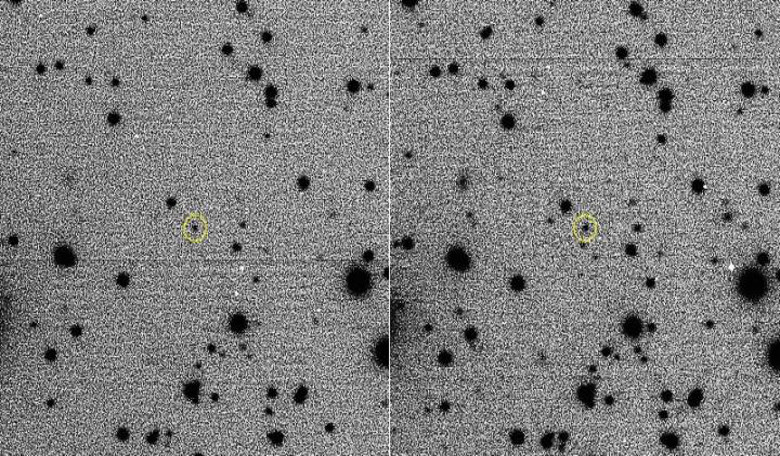Scientists have found an extraterrestrial body hiding in the midst of the Solar System and its not just here on vacation. Known as Asteroid 2015 BZ509, the 3 kilometre ball of rock is the very first object in the Solar System shown to have an extrasolar origin.
Late last year, the news was alight with reports that an alien visitor in the shape of a dark, organic coated, highly-elongated (around 400 metres long) rocky object was hurtling through the Solar System on an interstellar sojourn around the Sun. Named after an Hawaiian word meaning ‘scout’, Oumuamua, brushed past the Earth before making its exit as it returned in the direction it came from.
Oumuamua however was just that - a visitor briefly passing through before travelling back to its home or on to other worlds. Asteroid 2015 BZ509, on the other hand, has been hanging around since the very early days after the formation of the Solar System.
This remarkable discovery was made by CNRS researcher Fathi Namouni and her colleague Helena Morais, a researcher at UNESP in Brazil who first spotted the object with the Pan-STARRS telescopes in Hawaii in 2014.
The asteroids distinctness was spotted when it was found that 2015 BZ509 shares an orbit with Jupiter and travels around the Sun at the same speed as the giant gas planet, but it does so in the opposite direction. This is called a retrograde orbit and although asteroids with retrograde orbits have been detected before, they are usually found only in the outer reaches of the Solar System.
To determine if 2015 BZ509 really is an extrasolar interloper, Namouni and Morais reconstructed its orbit by running numerical simulations that could go back as far as 4.5 billion years in time. The simulations showed that 2015 BZ509 had always had a retrograde orbit, even in the infant days of the Solar System when it was very young. This would correspond to a period when all of the asteroids and planets orbited the Sun in the same direction, so it further implies that 2015 BZ509 did not originate here but must have formed in a neighbouring planetary system before being captured by Jupiter.
Being captured in this way might seem a little dubious, but over 4.5 billion years ago when the Sun started to evolve it was part of a stellar cluster where the inhabitants were much closer together – indeed the Sun is expected to have a twin somewhere out there in the vast emptiness of space, but so far it has eluded detection. So, before the nascent protoplanetary discs began drifting apart from one another, the gravitational pull of the planets could have allowed these planetary systems to interact and capture asteroids from each other.
While 2015 BZ509 may be the first of its kind to be discovered, it is unlikely to be the last. To run the simulations, Namouni and Morais created a million virtual asteroid clones moving under the same conditions to see what happened to them all. Most remained in a stable orbit, while some were obliterated by the Sun, but a handful of others were ejected into polar orbits, meaning that instead of orbiting in an east-west type orientation along the Sun’s equator, they orbit in a north-south orientation along the Suns poles I.e they are perpendicular to the plane containing the orbits of the planets.
According to our planet formation models, this type of orbit shouldn’t occur as the planets (and other small bodies) should orbit on the same plane and in the same direction as the Sun’s rotation.
However, it turns out that asteroids in polar orbits do exist today out beyond Neptune, our most distant planet. While there are only around ten of them, they could be added to the list of extrasolar bodies in the Solar System, after further analysis on their status has been carried out.











